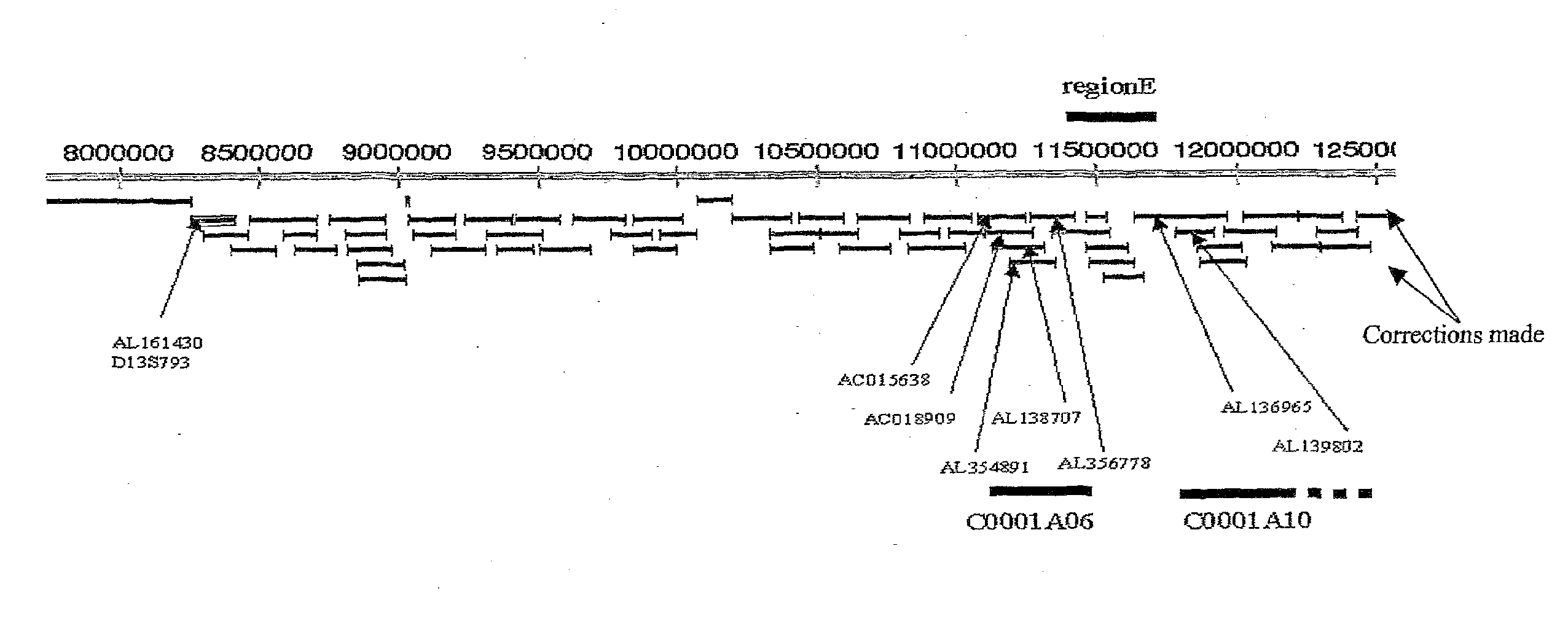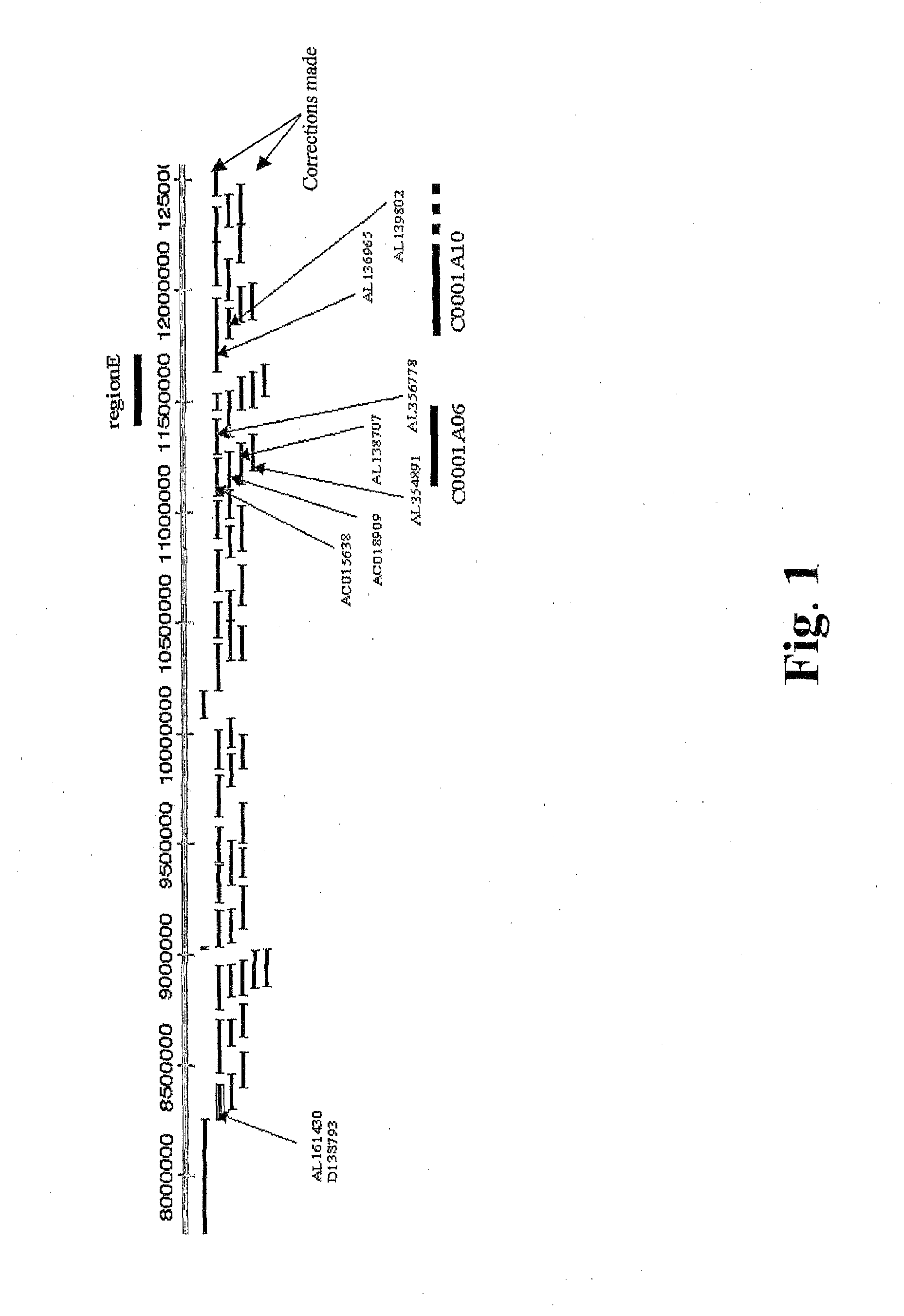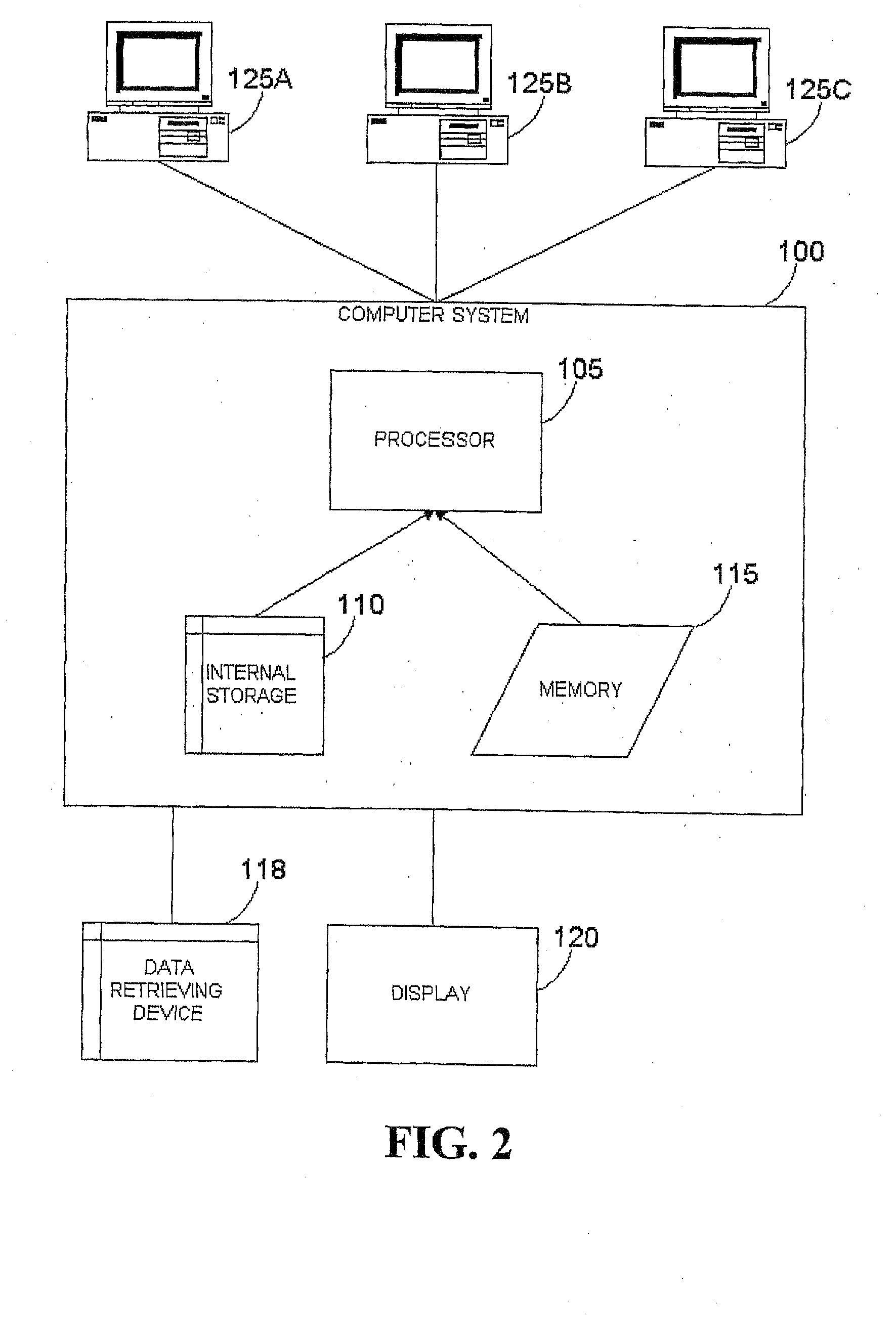Schizophrenia-related voltage-gated ion channel gene and protein
a voltage-gated ion channel and gene technology, applied in the field of schizophrenia-related voltage-gated ion channel gene and protein, can solve the problems of complex and poorly understood etiologies of cns disorders, difficult measurement, and difficult characterization
- Summary
- Abstract
- Description
- Claims
- Application Information
AI Technical Summary
Benefits of technology
Problems solved by technology
Method used
Image
Examples
example 1
Identification of Biallelic Markers
DNA Extraction
[0779]Donors were unrelated and healthy. They presented a sufficient diversity for being representative of a French heterogeneous population. The DNA from 100 individuals was extracted and tested for the detection of the biallelic markers.
[0780]30 ml of peripheral venous blood were taken from each donor in the presence of EDTA. Cells (pellet) were collected after centrifugation for 10 minutes at 2000 rpm. Red cells were lysed by a lysis solution (50 ml final volume: 10 mM Tris pH7.6; 5 mM MgCl2; 10 mM NaCl). The solution was centrifuged (10 minutes, 2000 rpm) as many times as necessary to eliminate the residual red cells present in the supernatant, after resuspension of the pellet in the lysis solution.
[0781]The pellet of white cells was lysed overnight at 42° C. with 3.7 ml of lysis solution composed of:[0782]3 ml TE 10-2 (Tris-HCl 10 mM, EDTA 2 mM) / NaCl 0 4 M[0783]200 μl SDS 10%[0784]500 μl K-proteinase (2 mg K-proteinase in TE 10-2...
example 2
Identification of Biallelic Markers
Amplification of Genomic DNA by PCR
[0789]The amplification of specific genomic sequences of the DNA samples of example 1 was carried out on the pool of DNA obtained previously. In addition, 50 individual samples were similarly amplified.
[0790]PCR assays were performed using the following protocol:
Final volume25μlDNA2ng / μlMgCl22mMdNTP (each)200μMprimer (each)2.9ng / μlAmpli Taq Gold DNA polymerase0.05unit / μlPCR buffer (10x = 0.1 M TrisHCl pH8.3 0.5M KCl)1x
[0791]Each pair of first primers was designed using the sequence information of the CanIon gene disclosed herein and the OSP software (Hillier & Green, 1991). This first pair of primers was about 20 nucleotides in length and had the sequences disclosed in Table 1 in the columns labeled PU and RP.
TABLE 1Position rangeComplementaryPosition range ofof amplificationposition range ofthe amplicon inPrimerprimer inPrimeramplification primerAmpliconSEQ ID 1nameSEQ ID No 1namein SEQ ID No 199-626261234312810B...
example 3
Identification of Biallelic Markers
Sequencing of Amplified Genomic DNA And Identification of Polymorphisms
[0796]The sequencing of the amplified DNA obtained in example 2 was carried out on ABI 377 sequencers. The sequences of the amplification products were determined using automated dideoxy terminator sequencing reactions with a dye terminator cycle sequencing protocol. The products of the sequencing reactions were run on sequencing gels and the sequences were determined using gel image analysis (ABI Prism DNA Sequencing Analysis software (2.1.2 version)).
[0797]The sequence data were further evaluated to detect the presence of biallelic markers within the amplified fragments. The polymorphism search was based on the presence of superimposed peaks in the electrophoresis pattern resulting from different bases occurring at the same position as described previously.
[0798]In the 17 fragments of amplification, 18 biallelic markers were detected. The localization of these biallelic marker...
PUM
 Login to View More
Login to View More Abstract
Description
Claims
Application Information
 Login to View More
Login to View More - R&D
- Intellectual Property
- Life Sciences
- Materials
- Tech Scout
- Unparalleled Data Quality
- Higher Quality Content
- 60% Fewer Hallucinations
Browse by: Latest US Patents, China's latest patents, Technical Efficacy Thesaurus, Application Domain, Technology Topic, Popular Technical Reports.
© 2025 PatSnap. All rights reserved.Legal|Privacy policy|Modern Slavery Act Transparency Statement|Sitemap|About US| Contact US: help@patsnap.com



